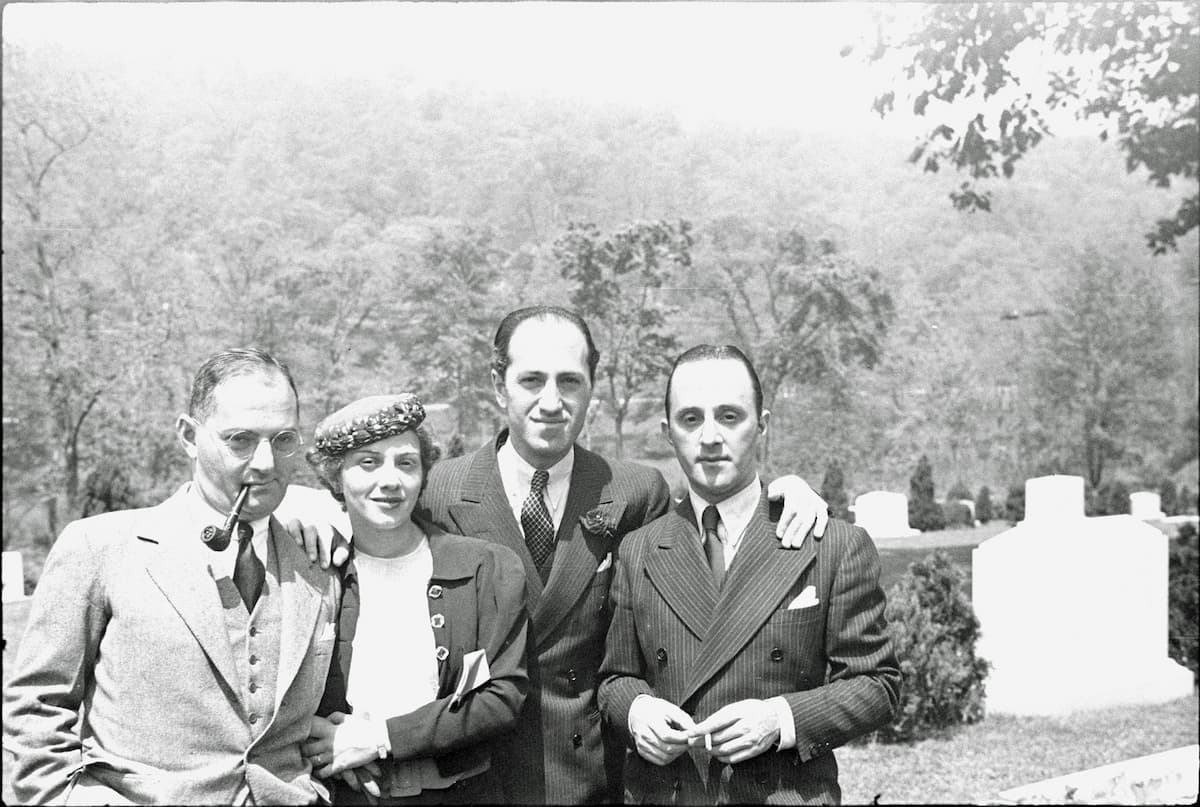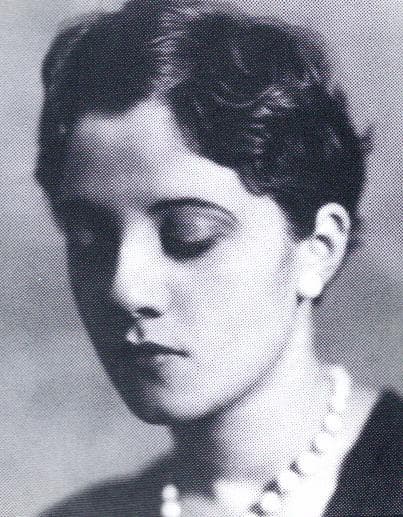Say the phrase “the Gershwin siblings” and any music lover immediately thinks of George and Ira Gershwin, two brothers famous for co-writing some of the most famous songs in the Great American Songbook.

Ira, Frankie, George and Arthur Gershwin
But George and Ira also had a sister named Frances Gershwin, also known as Frankie. Turns out, Frankie Gershwin was a major inspiration to them…and she was actually the first Gershwin sibling to make a living in the performing arts!
Her Childhood and Early Musical Career
Frankie Gershwin was born on 6 December 1906 in Manhattan, the youngest of four children. Her mother Rose had a strong personality; Frankie later described her as “interested just in what she wanted to do.” Her father, on the other hand, was “very gentle” and “very sweet.” But her closest family relationships by far were with her three older brothers, especially George, who was eight years her senior.
George Gershwin was a mischievous boy who spent his time playing in the streets of New York, but he became obsessed with music in 1908 after hearing a friend’s violin recital. Soon George began making a name for himself playing piano in Tin Pan Alley, and Ira began collaborating with him as a lyricist. (Ira’s initial pseudonym was Arthur Francis: the combined names of his two younger siblings!) Arthur also got involved in the family trade, becoming a composer by night and a stockbroker by day. But of the four Gershwin children, it was Frankie Gershwin who initially had the most musical success.
Frankie began her musical journey by singing when George practiced. He encouraged her, and by the age of eleven she was actually touring as a singer and dancer in a children’s show called “Daintyland.” She enjoyed pointing out to George that while he was working for $15 a week playing piano in Tin Pan Alley, she was earning three times that at a much younger age.
The Siblings Collaborate

Frankie Gershwin © findagrave.com
Frankie Gershwin was the first person to sing many of her brothers’ most famous songs. She also had a front-row seat to the creation of the stage shows those songs would feature in. During rehearsals for “Lady Be Good”, she actually studied the dance numbers with George that the show’s star – Fred Astaire – had taught him.
By the late 1920s, the siblings’ careers were taking off. In the spring of 1928, George, Ira, and Frankie sailed to Europe, and she proved to be a very popular performer there. Cole Porter was so entranced with her voice that, according to her obituary, he “designed a show for her at the storied nightclub Les Ambassadeurs.” George served as her last-minute accompanist, and they performed some of his best-known songs together.
The Man I Love · Alfred Simon · Frances Gershwin
Frankie later remembered: “I just enjoyed what I was doing because it was the one thing I felt that I could do to hold people’s attention. It was like a Cinderella story. From being nothing at home, suddenly have some attention paid. It was one of the highlights of my life.”
Marriage and Turning Down a Music Career
The experience proved to be a crossroads when professional offers began pouring in. She could either accept one of them and make a go at a life on the stage or return home to America with her brothers. She chose to return home.
Two years later, over her mother Rose’s objections (rather hilariously, Rose claimed that her future son-in-law aggravated her asthma), she married Leopold Godowski, Jr., a violinist and chemist, and son of the famous pianist. Presumably Rose got over her asthma after Godowski co-developed Kodachrome, an early color film and a major technical advance in photography. Frankie helped her new husband with the project by posing in outfits that would suit the film – for example, with a red hat and green dress.
She also became increasingly interested in visual art herself, experimenting with sculpture and taking up painting, much like George once had.
George Gershwin died in July 1937 after a failed surgery for a brain tumor. Ira was so devastated that he took several years away from music. Frankie was gutted, too. Soon the partnership of the Gershwin brothers began to be mythologized in pop culture…and those writing the history had no space for Frankie. In 1945, when the biopic Rhapsody in Blue was released, Frankie was actually written out of Gershwin’s life entirely.
Motherhood – And a Return to Music

Frankie Gershwin Godowsky and her husband
Frankie Gershwin had four children: a son and three daughters. Her middle age was relatively uneventful, musically speaking. However, in the 1970s, after her children were grown, she began to sing again. She even recorded an album – a fascinating, bittersweet window into what might have been, had she made a different choice during that fateful 1928 trip – and sang regularly in public. In fact, she made appearances at the Lambs Club in New York City well into her late eighties.
Frankie Gershwin died on 18 January 1999. It’s a tragedy that her creative relationship with her brothers has been eclipsed by the partnership of George and Ira. She was hugely talented in her own right and was integral to their early musical successes. We can only imagine what might have been had they all been able to continue their musical careers together.
For more of the best in classical music, sign up for our E-Newsletter



